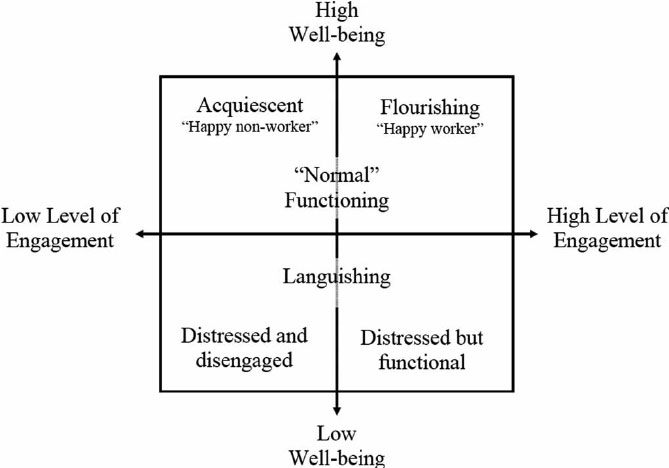Professional coaching as an investment in human capitalpar Nathalie Dubé, MCC
As a coach, I often get asked: “How can an organization profit from business coaching?” There is a myth that coaching is only beneficial in financial terms. In an article published in the International Journal of Evidence-Based Coaching and Mentoring[1], Janice Cook offers a different perspective on coaching: “One of the unwritten goals of coaching is to ensure enduring learning and development for the client that can be sustained long beyond the end of the coaching intervention. Such sustainability would guarantee a return on investment for both the client and any sponsoring organization.”[2] The viability and sustainability of the learning provided by coaching become the foundations for assessing a return on investment.This way of measuring performance brings us to a more holistic vision of developing an organization’s human resources. That’s what Anthony Grant from the University of Sydney states in his lecture titled “Return on investment is a poor measure of coaching success: towards a more holistic approach using a well-being and engagement framework”
Investing in the well-being of employees
The author proposes the “well-being engagement framework (WBEF)” model, based, among other things, “on two important variables for coaching in organizational settings: well-being and workplace engagement. Organizations function better with mentally healthy employees who are engaged in their work activities, and these I argue should be some of the key metrics in evaluating coaching success. These humanistic metrics are able to give a far more meaningful and holistic view of the impact of a coaching intervention than a single monetary figure.”
Well-being is much more than the absence of mental illness. It implies self-acceptance, a raison d’être, positive relationships with others, control over your environment, and autonomy (Ryff & Keyes, 1995). Individuals have a “high” level of well-being when they are thriving, smart, and healthy. Inversely, those with low or non-existent well-being are despondent and subdued (Keyes & Haidt, 2003). Commitment at work, the opposite of professional burnout, translates into high levels of energy, extensive involvement, and a strong dedication to performing one’s professional duties (Maslach & Goldberg, 1998).

Area of flourishing:
Employees in this area have a high level of well-being and high levels of engagement. They are fully involved in their work and understand its importance and purpose. They enjoy positive relationships with colleagues.
Area of acquiescence:
This area includes employees who have a high level of well-being but low engagement. They are “happy but disengaged”. They are physically and emotionally present but do not actively work towards the organization’s goals. Some individuals may become cynical and despondent. Coaching is an efficient solution to bring these individuals into the “flourishing” area.
Distressed and disengaged area:
Functional employees who feel distressed and/or stressed are in this area (potential burnout, depression, etc.). In light of their psychological condition, coaching is not an appropriate solution to help these individuals.
Distressed but functional area:
This area includes employees who have a low level of well-being but do not feel distressed or stressed. They may want to increase their engagement to their organization but lack the energy and drive to do so. Coaching can once again be an efficient strategy to assist these individuals in getting to the “flourishing area.”
On an individual basis, the WBEF model provides a way to assist coaches, as well as those who assess the interventions of coaching, to evaluate progress if the objective is to bring employees to the flourishing area. The model can also be used as a diagnostic tool to find out if coaching could be beneficial for an employee. Moreover, the model can be used to ascertain the primary focus of any coaching intervention: reduce stress, improve well-being at work, or increase the engagement of resources.
On an organizational level, evaluating coaching interventions with the above model can provide information that helps categorize work teams, management teams, and the entire organization to understand in which ways the organization is “flourishing” or “despondent”.
The costs related to resource demobilization and disengagement are well-known and documented[4]. These include the costs of absenteeism, replacing an employee, loss of revenue resulting from a decrease in performance, the impact on an employer’s brand image such as the organization placing lower or not at all on a list of top employers, etc. In fact, this is a key aspect and will be discussed in a future article.
A good return on investment
Let’s now imagine that thanks to coaching, employees at all levels of an organization can thrive and get to the “flourishing” area, increasing levels of engagement and mobilization. What about the return on investment for coaching? It is first and foremost a humanistic ROI, then a monetary one. Most importantly, its impact is long-lasting and affects the organization’s performance.
[1] https://researchportal.coachfederation.org/MediaStream/PartialView?documentId=2043
[2] Traduction libre – Texte original écrit en anglais
[4] La démobilisation, une étude exploratoire, Paula Nestea, 2008, pages 115 to 125Améliorer la sélection et la formation des managers, Marcel-Lucien Goldschmd, 2015
Bien-être au travail et performance de l’organisation, Nathalie Delobbe, 2009
Taux de roulement : Les dommages collatéraux, Samuel Larochelle, La Presse April 2014

